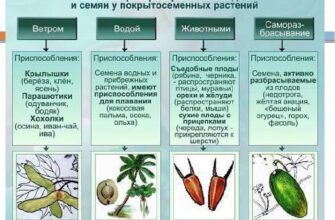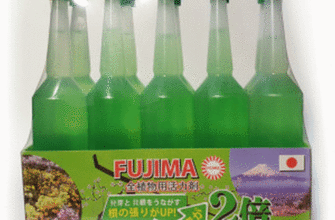Биология внутренних вод, 2020, № 6, стр. 562-572
Глобальное распространение цианобактерий: причины и последствия (Обзор)
В. И. Сухаревич a , Ю. М. Поляк a, *
a Санкт-Петербургский научно-исследовательский центр экологической безопасности Российской академии наук
Санкт-Петербург, Россия
Поступила в редакцию 20.01.2020
После доработки 26.03.2020
Принята к публикации 16.04.2020
Полные тексты статей выпуска доступны только авторизованным пользователям.
Настоящий обзор посвящен глобальному распространению цианобактерий в водоемах, возможным причинам этого явления и его последствиям. Стремительное распространение цианобактерий в водоемах в последние десятилетия происходит повсеместно и сопровождается загрязнением воды опасными метаболитами – цианотоксинами, представляющими значительную угрозу для человека, животных и окружающей среды. Серьезные проблемы связаны не только с необходимостью очистки воды от цианотоксинов, но и с возникновением неприятного вкуса и запаха питьевой воды в результате образования цианобактериями одорирующих веществ, с борьбой с биокоррозией, вызванной цианобактериальным обрастанием. Цианобактериальные “цветения” становятся препятствием для водоснабжения, рыболовства, рекреационного использования водоемов, туризма. Среди многих факторов, способствующих распространению цианобактерий, – глобальное потепление и изменение климата, постоянно возрастающая эвтрофикация природных вод и антропогенное загрязнение, а также уникальные физиологические особенности цианобактерий, их способность адаптироваться к самым разным условиям среды, в том числе и экстремальным.
Полные тексты статей выпуска доступны только авторизованным пользователям.
Абдуллин Ш.Р., Багмет В.Б. 2016. Миксотрофия цианобактерий и водорослей в условиях пещер // Журн. общ. биол. Т. 77. № 1. С. 54.
Белых О.И., Гладких А.С., Сороковикова Е.Г. и др. 2015. Сакситоксин-продуцирующие цианобактерии в озере Байкал // Сибирский экол. журн. Т. 22. № 2. С. 229.
Белых О.И., Тихонова И.В., Кузьмин А.В. и др. 2020. Токсин-продуцирующие цианобактерии в озере Байкал и водоемах Байкальского региона // Теоретическая и прикладная экология. № 1. С. 21.
Булгаков Н.Г., Левич А.П. 1995. Биогенные элементы в среде и фитопланктон: отношение азота к фосфору как самостоятельный регулирующий фактор // Успехи соврем. биол. Т. 15. Вып. 1. С. 13.
Бутакова Е.А. 2013. Особенности одорирующих веществ (геосмина и 2-метилизоборнеола) как вторичных метаболитов цианобактерий // Физиол. раст. Т. 60. С. 537.
Волошко Л.Н., Пиневич А.В. 2014. Разнообразие токсинов цианобактерий // Астрах. вест. экол. обр. № 1(27). С. 68.
Поляк Ю.М. 2015. Азольные соединения как фактор воздействия на массовые виды цианобактерий // Вода: химия и экология. № 12. С. 10.
Поляк Ю.М., Сухаревич В.И. 2016. Влияние нонилфенола на цианобактерию Microcystis aeruginosa в различных окислительно-восстановительных условиях среды // Вест. биотех. и физ.-хим. биол. им. Ю.А. Овчинникова. Т. 12. № 3. С. 23.
Поляк Ю.М., Сухаревич В.И. 2017. Токсигенные цианобактерии: распространение, регуляция синтеза токсинов, способы их деструкции // Вода: химия и экология. № 11–12. С. 125.
Поляк Ю.М., Сухаревич В.И. 2019а. Аллелопатические взаимоотношения растений и микроорганизмов в почвенных экосистемах // Успехи соврем. биол. Т. 2. С. 147.
Поляк Ю.М., Cухаревич В.И. 2019б. Бентосные цианобактерии: особенности роста, физиологии и токсинообразования // Региональная экология. № 2(56). С. 57.
Поляк Ю.М., Зайцева Т.Б., Петрова В.H., Медведева Н.Г. 2011. Развитие массовых видов цианобактерий в условиях загрязнения тяжелыми металлами // Гидробиол. журн. Т. 47. № 1. С. 84.
Поляк Ю.М., Шигаева Т.Д., Кудрявцева В.А., Сухаревич В.И. 2014. Влияние аэрации и редокспотенциала на рост, фотосинтез и токсинообразование цианобактерии Microcystis aeruginosa 973 // Вода: химия и экология. № 11. С. 60.
Попова А.А., Кокшарова О.А. 2016. Нейротоксичная небелковая аминокислота – β-N-метиламино-L-аланин и ее роль в биологических системах // Биохимия. 2016. Т. 81. Вып. 8. С. 1021.
Румянцев В.А., Крюков Л.Н., Поздняков Ш.Р., Жуковский А.В. 2011. Цианобактериальное “цветение” воды – источник проблем природопользования и стимул инноваций в России // Общество. Среда. Развитие. № 2. С. 222.
Тарасова В.Н., Андросова В.И., Сонина А.В. 2012. Лишайники. Физиология, экология, лихеноиндикация. Петрозаводск: Изд-во Петрозавод. гос. ун-та.
Чернова Е.Н., Русских Я.В., Жаковская З.А. 2017. Токсичные метаболиты сине-зеленых водорослей и методы их определения // Вестник СПбГУ. Физика и химия. Т. 4(62). Вып. 4. С. 440.
Briand J.F., Leboulanger C., Humbert J.F. et al. 2004. Cylindropsermopsis raciborskii (Cyanobacteria) invasion at mid-latitudes: Selection, wide physiological tolerance or global warming? // J. Phycol. V. 40. № 2. P. 231.
Briland R.D., Stone J.P., Manubolu M. et al. 2020. Cyanobacterial blooms modify food web structure and interactions in western Lake Erie // Harmful Algae. V. 92. 101586. https://doi.org/10.1016/j.hal.2019.03.004
Burford M.A., Hamilton D.P., Wood S.A. 2018. Emerging HAB research issues in freshwater environments // Global Ecology and Oceanography of Harmful Algal Blooms, Ecological Studies 232. Cham: Springer. P. 381.
Burford M.A., Beardall J., Willis A. et al. 2016. Understanding the winning strategies used by the bloom forming cyanobacterium Cylindrospermopsis raciborskii // Harmful Algae. V. 54. P. 44.
Burford M.A., Carey C.C., Hamilton D.P. et al. 2020. Perspective: Advancing the research agenda for improving understanding of cyanobacteria in a future of global change // Harmful Algae. V. 91. 101601. https://doi.org/10.1016/j.hal.2019.04.004
Carreto J.I., Carignan M.O. 2011. Mycosporine-like amino acids: relevant secondary metabolites. Chemical and ecological aspects // Mar. Drugs. V. 9. P. 387.
Carey C.C., Ibelings B.W., Hoffman E.P. et al. 2012. Eco-physiological adaptations that favour freshwater cyanobacteria in a changing climate // Water Res. V. 46. P. 1394.
Carmichael W.W. 1997. The cyanotoxins // Adv. Bot. Res. V. 27. P. 211.
Carmichael W.W. 2001. Health effects of toxin producing cyanobacteria: the cyanoHABs // Human Ecol. Risk Assessment. V. 7. P. 1393.
Christiansen G., Molitor C., Philmus B., Kurmayer R. 2008. Nontoxic strains of cyanobacteria are the result of major gene deletion events induced by a transposable element // Mol. Biol. Evol. V. 25. P. 1695.
Codd G.A., Morrison L.F., Metcalf J.S. 2005. Cyanobacterial toxins: Risk management for health protection // Toxicol. Appl. Pharmacol. V. 203. P. 264.
Conley D.J., Paerl H.W., Howarth R.W. et al. 2009. Ecology. Controlling eutrophication: Nitrogen and phosphorus // Science. V. 323. P. 1014.
Dai R., Liu H., Qu J., Zhao X., Hou Y. 2009. Effects of amino acids on microcystin production of the Microcystis aeruginosa // J. Hazard. Mater. V. 30. № 161 (2–3). P. 730.
Dasey M., Ryan N., Wilson J. et al. 2005. Investigations into the taxonomy, toxicity and ecology of benthic cyanobacterial accumulations in Myall Lake, Australia // Mar. Freshwater Res. V. 56. P. 45.
De Morais P., Stoichev T., Basto M.C.P. et al. 2014. Cyanobacterium Microcystis aeruginosa response to pentachlorophenol and comparison with that of the microalga Chlorella vulgaris // Water Res. V. 52. P. 63.
Dittmann E., Fewer D.P., Neilan B.A. 2013. Cyanobacterial toxins: biosynthetic routes and evolutionary roots // FEMS Microbiol. Rev. V. 37. P. 23.
Dodds W.K., Bouska W.W., Eitzmann J.I. et al. 2009. Eutrophication of U.S. freshwaters: analysis of potential economic damages // Environ. Sci. Technol. V. 43. P. 12.
Drobac D., Tokido N., Simeunovic J. et al. 2013. Human exposure to cyanotoxins and their effects on health // Archives Indust. Hygiene Toxicol. V. 64. P. 305.
Dziallas C., Grossart H.-P. 2011. Increasing oxygen and water temperature select for toxic Microcystis sp. // PLoS ONE. V. 6. № 9. P. 1.
Falconer I.R. 2005. Prevention, mitigation and remediation of cyanobacterial blooms in reservoirs // Cyanobacterial Toxins of Drinking Water Supplies. London: CRC Press. P. 215.
Glibert P.M., Burford M.A. 2017. Globally changing nutrient loads and harmful algal blooms: Recent advances, new paradigms, and continuing challenges // Oceanography. V. 30. P. 58.
Hallock P. 2005. Global change and modern coral reefs: new opportunities to understand shallow-water carbonate depositional processes // Sedimentary Geol. V. 175. P. 19.
Halstvedt C.B., Rohrlack T., Andersen T. et al. 2007. Seasonal dynamics and depth distribution of Planktothrix spp. in Lake Steinsfjorden (Norway) related to environmental factors // J. Plankt. Res. V. 29. № 5. P. 471.
Harke M.J., Steffen M.M., Gobler C.J. et al. 2016. A review of the global ecology, genomics, and biogeography of the toxic cyanobacterium, Microcystis spp. // Harmful Algae. V. 54. P. 4.
He Y.-Y., Häder D.-P., 2002. Involvement of reactive oxygen species in the UV-B damage to the cyanobacterium Anabaena sp. // J. Photochem. Photobiol. B: Biology. V. 66. P. 73.
Heath M.W., Wood S.A., Ryan K.G. 2011. Spatial and temporal variability in Phormidium mats and associated anatoxin-a and homoanatoxin-a in two New Zealand rivers // Aquat. Microb. Ecol. V. 64. P. 69.
Hodgkins G.A. 2013. The importance of record length in estimating the magnitude of climatic changes: an example using 175 years of Lake ice-out dates in New England // Climate Change. V. 119. P. 705.
Ibelings B.W., Chorus I. 2007. Accumulation of cyanobacterial toxins in freshwater-seafood and its consequences for public health: A review // Env. Pollut. V. 150. P. 177.
Izaguirre G., Jungblut A.D., Neilan B.A. 2007. Benthic cyanobacteria (Oscillatoriaceae) that produce microcystin-LR, isolated from four reservoirs in southern California // Water Res. V. 41. P. 492.
Jiang Y., Ji B., Wong R.N.S., Wong M.H. 2008. Statistical study of the effects of environmental factors on the growth and microcystins production of bloom-forming cyanobacterium Microcystis aeruginosa // Harmful Algae. V. 7. P. 127.
Jochimsen E.M., Carmichael W.W., An J.S. et al. 1998. Liver failure and death after exposure to microcystins at a hemodialysis center in Brazil // The New England J. Medicine V. 338. P. 873.
Jüttner F., Watson S.B. 2007. Biochemical and ecological control of geosmin and 2-methylisoborneol in source waters // Appl. Environ. Microbiol. V. 73. P. 4395–4406.
Kahru M., Elmgren R., Kaisermc J. et al. 2020. Cyanobacterial blooms in the Baltic Sea: Correlations with environmental factors // Harmful Algae. V. 92. 101739. https://doi.org/10.1016/j.hal.2019.101739
Kamal A.A., Ahmad I.Z. 2014. Cyanobacteria the “blue green algae” and its novel applications: A brief review // Int. J. Innov. Appl. Stud. V. 7. P. 251.
Kaplan A., Harel M., Kaplan-Levy R.N. et al. 2012. The languages spoken in the water body (or the biological role of cyanobacterial toxins) // Front. Microbiol. V. 3. P. 1.
Kosten S., Huszar V.L.M., Becares E. et al. 2012. Warmer climates boost cyanobacterial dominance in shallow lakes // Glob. Change Biol. V. 18. P. 118.
Kotak B.G., Lam A.K.-Y., Prepas E.E. et al. 1995. Variability of the hepatotoxin microcystin-LR in hypereutrophic drinking water lakes // J. Phycol. V. 31. P. 248.
Kurmayer R., Deng L., Entfellner E. 2016. Role of toxic and bioactive secondary metabolites in colonization and bloom formation by filamentous cyanobacteria // Harmful Algae. V. 54. P. 69.
Lehtimäki J., Moisander P., Sivonen K., Kononen K. 1997. Growth, nitrogen fxation, and nodularin production by two baltic sea cyanobacteria // Appl. Environ. Microbiol. V. 63. № 5. P. 1647.
Lee J., Rai P.K., Jeon Y.J. et al. 2017. The role of algae and cyanobacteria in the production and release of odorants in water // Environ. Pollut. V. 227. P. 252.
Li Z., Hobson P., An W. et al. 2012. Earthy odor compounds production and loss in three cyanobacterial cultures // Water Res. V. 46. P. 5165.
Li X., Dreher T.W., Li R. 2016. An overview of diversity, occurrence, genetics and toxin production of bloom-forming Dolichospermum (Anabaena) species // Harmful Algae. V. 54. P. 54.
Liu Y., Wang F., Chen X. et al. 2015. Cellular responses and biodegradation of amoxicillin in Microcystis aeruginosa at different nitrogen levels // Ecotoxicol. Environ. Saf. V. 111. P. 138.
Lopes V.R., Vasconcelos V.M. 2011. Planktonic and benthic cyanobacteria of European brackish waters: a perspective on estuaries and brackish seas // Eur. J. Phycol. V. 46. № 3. P. 292.
Makhalanyane T.P., Valverde A., Velázquez D. et al. 2015. Ecology and biogeochemistry of cyanobacteria in soils permafrost, aquatic and cryptic polar habitats // Biodivers. Conserv. V. 24. P. 819.
Merel S., Walker D., Chicana R. et al. 2013. State of knowledge and concerns on cyanobacterial blooms and cyanotoxins // Environ. Int. V. 59. P. 303.
Moisander P.H., Ochiai M., Lincoff A. 2009. Nutrient limitation of Microcystis aeruginosa in northern California Klamath River reservoirs // Harmful Algae. V. 8. P. 889.
Molot L.A., Watson S.B., Creed I.F. et al. 2014. A novel model for cyanobacteria bloom formation: the critical role of anoxia and ferrous iron // Freshwater Biol. V. 59. P. 1323.
Namikoshi M., Rinehart K.L. 1996. Bioactive compounds produced by cyanobacteria // J. Industr. Microbiol. Biotechn. V. 17. P. 373.
Novotny V. 1999. Diffuse pollution from agriculture – A worldwide outlook // Water Sci. Technol. V. 39. P. 1.
Oh H.M., Lee S.J., Jang M.H., Yoon B.D. 2000. Microcystin production by Microcystis aeruginosa in a phosphorus-limited chemostat // Appl. Environ. Microbiol. V. 66. № 1. P. 176.
Omidi A., Esterhuizen-Londt M., Pflugmacher S. 2018. Still challenging: the ecological function of the cyanobacterial toxin microcystin – What we know so far // Toxin Reviews. V. 37. P. 87.
O’Neil J.M., Davis T.W., Burford M.A., Gobler C.J. 2012. The rise of harmful cyanobacteria blooms: the potential roles of eutrophication and climate change // Harmful Algae. V. 14. P. 313.
Paerl H.W., Fulton R.S. 2006. Ecology of harmful cyanobacteria // Ecology of Harmful Algae. Berlin: Springer. P. 95.
Paerl H.W., Paul V.J. 2012. Climate change: links to global expansion of harmful cyanobacteria // Water Res. V. 46. P. 1349.
Paerl H.W., Gardner W.S., Havens K.E. et al. 2016. Mitigating cyanobacterial harmful algal blooms in aquatic ecosystems impacted by climate change and anthropogenic nutrients // Harmful Algae. V. 54. P. 213.
Paerl H.W. 2017. Controlling cyanobacterial harmful blooms in freshwater ecosystems // Microb. Biotechnol. V. 10. P. 1106.
Paerl H.W., Otten T.G., Kudela R. 2018. Mitigating the expansion of harmful algal blooms across the freshwater-to-marine continuum // Environ. Sci. Technol. V. 52. P. 5519.
Paul V.J. 2008. Global warming and cyanobacterial harmful algal blooms // Cyanobacterial Harmful Algal Blooms: State of the Science and Research Needs. Advances in Experimental Medicine and Biology. V. 619. Springer. P. 239.
Pei Y., Xu R., Hilt S., Chang X. 2020. Effects of cyanobacterial secondary metabolites on phytoplankton community succession // Co-Evolution of Secondary Metabolites. Reference Series in Phytochemistry. Cambridge: Springer. P. 323.
Peter A., von Gunten U. 2007. Oxidation kinetics of selected taste and odor compounds during ozonation of drinking water // Environ. Sci. Technol. V. 41. P. 626.
Pham T.L., Shimizu K., Dao T.S. et al. 2015. Microcystin uptake and biochemical responses in the freshwater Clam Corbicula leana P., exposed to toxic and non-toxic Microcystis aeruginosa: Evidence of tolerance cyanotoxins // Toxicol. Reports. V. 2. P. 88.
Polyak Y., Zaytseva T., Medvedeva N. 2013. Response of toxic cyanobacterium Microcystis aeruginosa to environmental pollution // Water Air Soil Pollut. V. 224. № 4. P. 1.
Potts M. 1994. Desiccation tolerance of prokaryotes // Microbiol. Reviews. V. 58. P. 755.
Quiblier C., Wood S., Echenique-Subiabre I. et al. 2013. A review of current knowledge on toxic benthic freshwater cyanobacteria – ecology, toxin production and risk management // Water Res. V. 47. P. 5464.
Rastogi R.P., Sinha R.P., Incharoensakdi A. 2014. The cyanotoxin-microcystins: current overview // Reviews Environ. Sci. Biotechnol. V. 13. № 2. P. 215.
Rastogi R.P., Madamwar D., Incharoensakdi A. 2015. Bloom dynamics of cyanobacteria and their toxins: Environmental health impacts and mitigation strategies // Front. Microbiol. V. 6. P. 1.
Reynolds C.S. 2006. Ecology of Phytoplankton (Ecology, Biodiversity and Conservation). Cambridge: Cambridge University Press.
Robarts R.D., Waiser M.J., Arts M.T., Evans M.S. 2005. Seasonal and diel changes of dissolved oxygen in a hypertrophic prairie lake // Lakes and Reservoirs: Research and Management. V. 10. P. 167.
Scholz S.N., Esterhuizen-Londt M., Pflugmacher S. 2017. Rise of toxic cyanobacterial blooms in temperate freshwater lakes: causes, correlations and possible countermeasures // Toxicol. Environ. Chem. V. 99. № 4. P. 543.
Scott J.T., Marcarelli A.M. 2012. Cyanobacteria in freshwater benthic environments // The Ecology of Cyanobacteria. Dordrecht: Springer. P. 271.
Smith F.M.J., Wood S.A., van Ginkel R. et al. 2011. First report of saxitoxin production by a species of the freshwater benthic cyanobacterium, Scytonema Agardh. // Toxicon. V. 57. P. 566.
Smith F., Wood S.A., Wilks T. et al. 2012. Survey of Scytonema (Cyanobacteria) and associated saxitoxins in the littoral zone of recreational lakes in Canterbury (New Zealand) // Phycologia. V. 51. P. 542.
Smith D.R., King K.W., Williams M.R. 2015. What is causing the harmful algal blooms in Lake Erie? // J. Soil Water Conservation. V. 70. P. 27.
Sulis A., Buscarinu P., Soru O., Sechi G.M. 2014. Trophic state and toxic cyanobacteria density in optimization modeling of multi-Reservoir water resource systems // Toxins. V. 6. P. 1366.
Tonk L., Bosch K., Visser P.M., Huisman J. 2007. Salt tolerance of the harmful cyanobacterium Microcystis aeruginosa // Aquat. Microb. Ecol. V. 46. P. 117.
Turner P.C., Gammie A.J., Hollinrake K., Codd G.A. 1990. Pneumonia associated with contact with cyanobacteria // British Med. J. V. 300. P. 1440.
Ueno Y., Nagata S., Tsutsumi T. et al. 1996. Detection of microcystin, a blue-green algal hepatotoxin, in drinking water sampled in Haimen and Fusui, endemic areas of primary liver cancer in China, by highly sensitive immunoassay // Carcinogenesis. V. 17. P. 1317.
Van Drecht G., Bouwman A.F., Harrison J., Knoop J.M. 2009. Global Nitrogen and 1651 Phosphate in Urban Wastewater for the Period 1970 to 2050 // Global Biogeochem. Cycles. V. 23. № 4. P. 1.
Wagner C., Adrian R. 2009. Cyanobacteria dominance: quantifying the effects of climate change // Limnol., Oceanogr. V. 54. P. 2460.
Wang J. Wang J., Xie P., Guo N. 2007. Effects of nonylphenol on the growth and microcystin production of Microcystis strains // Environ. Res. V. 103. P. 70.
Watanabe M.F., Oishi S. 1985. Effects of environmental factors on toxicity of a cyanobacterium (Microcystis aeruginosa) under culture conditions // Appl. Environ. Microbiol. V. 49. № 5. P. 1342.
Watson S.B., Charlton M., Yerubandi R. et al. 2007. Off flavour in large waterbodies: physics, chemistry and biology in synchrony // Water Sci. Technol. V. 55. P. 1.
Watson S.B., Monis P., Baker P., Giglio S. 2016. Biochemistry and genetics of taste- and odor-producing cyanobacteria // Harmful Algae. V. 54. P. 112.
Xue L., Zhang Y., Zhang T. et al. 2005. Effects of enhanced ultraviolet-B radiation on algae and cyanobacteria // Crit. Rev. Microbiol. V. 31. P. 79.
Zilius M., De Wit R., Bartoli M. 2016. Response of sedimentary processes to cyanobacteria loading // J. Limnol. V. 75. P. 236.
Источник




